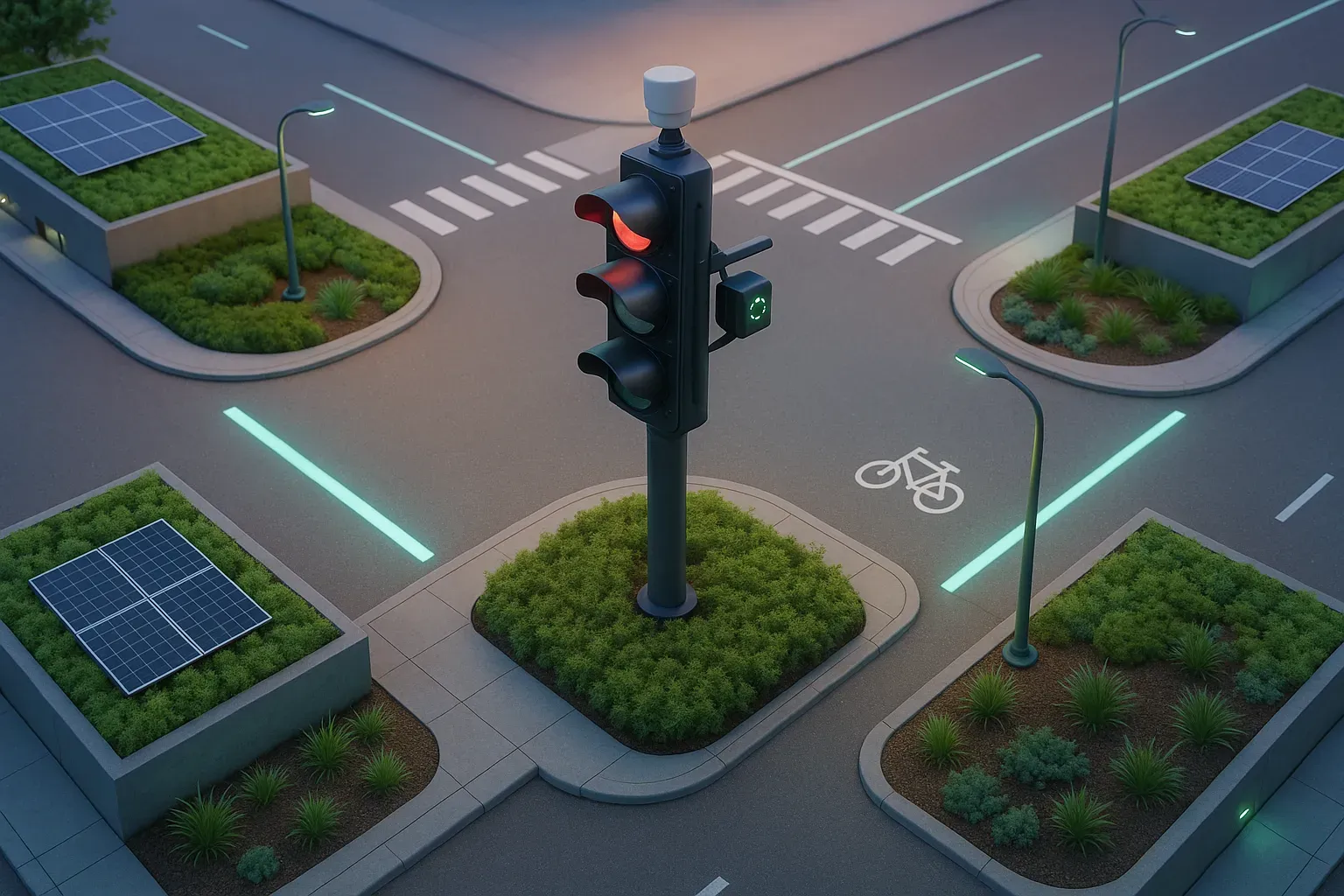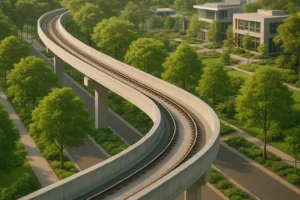Smart infrastructure offers real solutions for today’s sustainability challenges, as demonstrated through numerous practical implementations across the country. Experts in energy management, traffic optimization, building systems, and fleet operations reveal how technology is making measurable environmental impacts. These case studies showcase how cities, schools, and businesses are using intelligent systems to reduce emissions, save resources, and create healthier environments.
- Smart Ventilation Controls Create Healthier Schools
- Smart Grids Transform Energy Distribution Nationwide
- IoT Sensors Cut Fleet Fuel Use 35%
- Pittsburgh Traffic Lights Reduce Emissions by 20%
Smart Ventilation Controls Create Healthier Schools
What I value most about smart infrastructure is its ability to turn complex sustainability goals into daily habits. The technology makes it simple to monitor energy use and adjust systems with precision. It helps transform resource management into something practical and measurable. It is a natural fit for organizations that want real results without adding user complexity. Every action becomes easier to track, and this builds confidence in sustainable progress.
A strong example is smart ventilation controls. These systems adjust airflow based on air quality and occupancy, reducing unnecessary fan use and improving indoor comfort. We have seen this applied in schools where air quality matters most. The outcome was lower utility costs and healthier learning spaces. This shows how sustainability can drive both efficiency and well-being in a way that benefits people and organizations alike.

Smart Grids Transform Energy Distribution Nationwide
Smart infrastructure solutions have advanced sustainability by creating highly efficient, data-driven systems that reduce resource waste, optimize energy use, and cut emissions. A leading example in the U.S. is the modernization of the electric grid through smart grid technology. Traditional grids operate one-way: power flows from centralized plants to consumers with limited real-time visibility. In contrast, smart grids create a two-way communication network between utilities and consumers, allowing operators to monitor demand and supply in real time, respond quickly to outages or inefficiencies, and integrate decentralized power sources.
Smart grids are essential for integrating renewable energy such as solar and wind, whose output fluctuates naturally. By providing flexibility in supply management, they reduce reliance on older, less efficient power plants used only during high-demand periods. These backup plants are costly and emit more pollution, so minimizing their use directly supports sustainability goals. Consumers also play a key role: smart meters provide real-time usage data, and demand-response programs encourage shifts in consumption during peak hours. This combination of advanced technology and behavioral engagement drives meaningful reductions in energy waste and greenhouse gas emissions.
Cities nationwide illustrate these benefits. Chattanooga, Tennessee boasts one of the nation’s most advanced smart grids, achieving faster power restoration after severe weather and generating significant economic value. Boulder, Colorado was the first city globally with a fully integrated smart grid, including smart meters and fiber-optic loops. Washington, D.C. pairs smart infrastructure with renewable energy goals and LED streetlight programs, while Austin, Texas pilots innovations through the Pecan Street Project. Other cities, including Columbus, Ohio and Fort Collins, Colorado, leverage smart grids to support electric vehicles, net-zero energy districts, and broader smart city initiatives.
Through these practical implementations, smart infrastructure turns technology into measurable outcomes: reducing fossil fuel reliance, increasing efficiency, lowering emissions, and empowering consumers to participate in sustainability. The U.S. Department of Energy notes revitalizing the grid represents the nation’s best chance to embed sustainability into the energy system, proof that smart infrastructure delivers both environmental impact and economic value.

IoT Sensors Cut Fleet Fuel Use 35%
The environmental benefit of smart infrastructure is that it optimizes resources in real-time, predicting demand, or proactively scheduling maintenance—all of which saves energy. My first-hand work on GPS tracking and IoT sensor networks for motorcycle fleet management demonstrates how to eliminate the waste of fuel, vehicles, and equipment. This delivers huge CO2 reduction and eliminates pointless driving by using resources efficiently with current information at the time.
We installed sensors on our motorcycles to track engine health, tire air pressure, battery requirements and maintenance schedules for predictive maintenance and operational processes across the fleet. Early servicing alarms alert for failure and optimize fuel consumption. Some benefits are: 35 percent less fuel is used for optimal routing, 40 percent cheaper equipment via preventative maintenance, and less need for urgent transport.
The fleet deployment can be optimized on the basis of real demand with this system, which reduces waste and improves service quality. Green doesn’t happen like something that you add; it is about how you optimize the operations. ‘Infrastructure must be intelligent’ becomes a financial winner because everybody wants things to be more efficient. Sustainability means reduced waste and better use of resources. Adopt connected monitoring solutions that provide predictive ROI measures and operational benefits with environmental rewards, serving your ultimate business goal.

Pittsburgh Traffic Lights Reduce Emissions by 20%
A real simple example is Pittsburgh’s smart traffic lights (called SURTRAC). They monitor live traffic and when it makes sense, change the greens to keep cars flowing rather than relying on fixed timers. In the real world, this reduced travel time by about 25%, heart-stopping waits at traffic lights by about 40%, and car emission levels (yes, there was another miracle) by around 20% on applicable routes. Cities like it because, without major construction, you can add it to most existing lights. It can also prioritize buses or bikes when called for. The most direct win is reduced waste — less pointless idling and stop-and-go, cleaner air now while we work on longer-term fixes like electrification and better transit.








